the




Our team will be expanding once again! You can expect the same great Parkes Team service with even more real estate experience and expertise.


• Our MARKET KNOWLEDGE means we know valuation, market searches and the selling and purchasing process inside and out.
• Each member of our TEAM brings different core strengths to every listing.

• With five agents, we can be RESPONSIVE: someone is always available to show your property, schedule a showing, or answer your questions.

• We’ve spent decades building a NETWORK of trusted professionals: lawyers, mortgage brokers, home inspectors, contractors, movers, landscapers and more! Our service doesn’t end once you’ve found your home.
• We have the NEGOTIATING SKILLS to get you the right home at the right price.

Homes designed to fit your lifestyle.







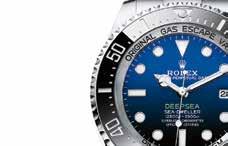



As a top-tier law rm, we are called into matters and mandates where there is no margin for error. We pair our deep knowledge of the law, our clients, and the nuances of the speci c matter at hand to come up with sound, strategic and e ective solutions.
When you need it right the first time.










 Dr. Dimitrios Balageorge
Orthopaedic Surgeon and Medical Director of Prota Clinic
Dr. Dimitrios Balageorge
Orthopaedic Surgeon and Medical Director of Prota Clinic
Publisher and Editor
Lisa Muirhead lisa@poisepublications.com
Editorial Board
Tina Jones, Sylvia Jansen, Gary Hewitt, Jill Kwiatkoski, Mike Muirhead, Ricki-Lee Podolecki
Graphic Design
Ryan Germain ryan.germain@gmail.com
Contributors
Todd Antonation, Andrée-Anne Boisvert, Erika Fridrik, Gary Hewitt, Sylvia Jansen, Abby Pelechaty, Tina Jones, Megan Kozminski/Media Spur Inc., Jill Kwiatkoski, Ian McCausland, Saralyn Mehta, Mike Muirhead, Apryl Nadeau, Manon Paquin, Tom Penner/Firefly Communications Experts, Ricki-Lee Podolecki, Malcolm Roberts, Anton Sikorsky, Jenny VanDenDriessche, Dylan Watkins
Published for Jones & Company Wine Merchants by Poise Publications Inc.
www.poisepublications.com
For advertising information, email lisa@poisepublications or visit poisepublications.com/the-cellar-door.
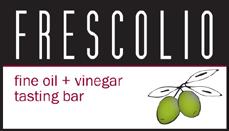
In 1999, Tina Jones had the vision of opening Banville & Jones Wine Co., a fine wine boutique in Winnipeg, Manitoba that specializes in promoting wine education and lifestyle. In 2020, we changed our name to Jones & Company to reflect our team and focus on shopping local, globally.
1616 St Mary’s Rd. Winnipeg, MB R2M 3W7 204-948-9463
JonesWines.com | @joneswinemerchants
© 2023 Poise Publications Inc.






Altitude. This is one of those concepts that at first seemed to me like an experts-only subject: too nuanced for the rest of us to understand. But our team organized a tasting that completely changed my mind. They brought together three tasting flights with just two wines in each flight.* The object was to compare wines that differed in almost nothing but the altitude of the vineyards: in each flight, the dominant grape variety or varieties were the same, the vineyards were geographically close to each other, and the finished wines were comparable in quality and price. The effect of altitude became obvious to experts and non-experts alike—it was a remarkable tasting! The wines from a higher altitude were noticeably higher in acidity, even when the ripeness of the fruit was beautiful in both; the grape varieties were almost mirrors of each other, yet the total structure was different. The exercise helped me realize that wine growers and winemakers know a lot more about this than we have recognized. I became a big fan of higheraltitude wines after undertaking this study—and I became convinced that we should share this revelation with you.
I invite you up these hills with our team and me! Mike Muirhead explores the factors that result in those remarkable differences we saw in our tasting. Jill Kwiatkoski takes us on the Autostrada and back roads of northern Italy on a driving tour through the hilly regions of Alto Adige and Veneto. Gary Hewitt helps us understand how being on an airplane affects how we taste wine. Sylvia Jansen and I have some fun with the trending subject of Pinot Gris/Pinot Grigio. And our wine experts put together a plantbased comfort meal paired with all the right winter wines. All in all, our team has done it again: they have taken a complex, seemingly experts-only subject and made it into fascinating reading.
Stay warm this winter, and travel with us through this delicious world of wine!
Cheers!
Tina Jones*Check out the tasting notes from our wine flights in Grapes With Altitude (page 22) and Friends With Benefits (page 38).
(the wine is pretty good too)
THELEMA
Chardonnay $37.99

Aromas of ripe peach, grapefruit marmalade, blossoms, complex yeasty flavours and toasty oak.
This family-owned and managed wine estate is situated in the spectacular Simonsberg Mountain range in Stellenbosch, South Africa. With elevations 530 meters above sea level, the high altitude and rich red soils are ideal for premium quality wine grape production.
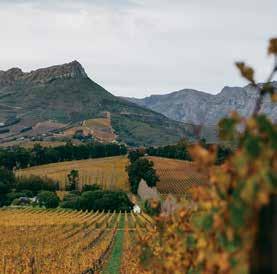
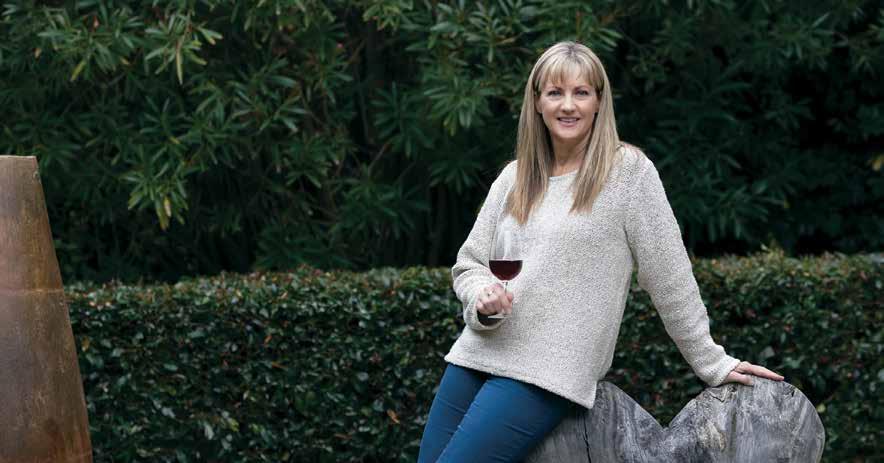
THELEMA
Mountain Red $25.99
Inviting aromas of juicy black fruit, mulberries, plums and hints of warm spice.
THELEMA
Shiraz $39.99


Spicy white pepper undertone with cassis, dark red fruit and aromas of mulberries.
Profoundly changing the Manitoba landscape from a pin-hole view of South African wine to a dazzling panorama.
Featured wines available at Jones & Company Wine Merchants.Wine is an alcoholic beverage made from fruit. During wine production, winemakers can add ingredients as tools to turn grape juice into a clear, drinkable wine. However, most of the items added to wine are actually removed in the filtration process and therefore don’t need to be included on the label.
Wine contains microscopic particles. Winemakers want to remove these particles (a process called fining) to make a more shelf-stable product for their consumers and to produce a clean wine. Most particles are so small that the winemaker must use certain processing aids (e.g., egg whites, among others) to cluster together the undesired particles. These compounds attract the undesired particles, creating a larger bundle that can now be filtered out. Added materials are also filtered out in that process, leaving incredibly small trace amounts. Many studies have shown that the trace amounts left over (measured in parts per million) pose no threat to consumers. In fact, Health Canada has run their own tests to ensure that the residual amounts of natural additives are too small to elicit an allergic reaction in even the most foodsensitive wine lover.
On the topic of allergens, some wine labels say “contains sulphites.” Sulphites occur naturally in grapes, and winemakers harness them to preserve wine. If you are sensitive to sulphites, look for “no added sulphites” on labels.
Rules for additions to wines vary among wine regions—Old World wineries have much stricter rules than New World. In order to manipulate flavour and perception, some winemakers add ingredients like sulphites, tannin powder, tartaric acid, sugar, and a grape concentrate called Mega Purple (for deeper red colours)—but it can be argued that these ingredients are actually naturally occurring in grapes. Does that mean that the “only” added ingredient in a bottle of wine is in fact “grapes”? No, but
it is a grey enough area that wineries have not been mandated to list exactly what has gone into the production of the wine.
—Ricki-Lee PodoleckiWhich wine varieties age better than others? For instance, does Pinot Noir age better than Cabernet Sauvignon?
—Bob PuchniakMost classic grape varieties have the potential to age well, but the age-ability of an individual wine depends upon a balance of fruit intensity, sweetness, acidity, alcohol, and the texture and concentration of tannins.
Different varieties, however, achieve balance in different ways. Cabernet Sauvignon has great aging potential because of intense fruit concentration, high levels of firm tannins, high acidity, and a capacity to absorb the life-extending elements of new oak—try the Typesetter 2018 Cabernet Sauvignon from Napa Valley ($76.99). Pinot Noir typically has less intense fruit and lower levels of finer tannins, but it also has high acidity and an affinity for oak. I suggest Gachot-Monot 2020 Les Chaillots Côte de Nuits-Villages from France ($79.99). Riesling—possibly the variety with the greatest natural aging potential—relies on fruit extract, high acidity and, frequently, residual sugar (Riesling does not rely on tannins or oak). Try the Rabl 2020 Langenlois Riesling Kamptal from Germany ($25.99). So, a tannic, concentrated Cabernet Sauvignon or a less tannic, lower-extract Pinot Noir may age equally well if they are of high quality and balanced.
Age-worthy reds from Nebbiolo, Sangiovese, Syrah, and Tempranillo, to name but a few, are variations on that theme. Alternatively, wines from Viognier and Sauvignon Blanc are almost invariably best served young, as are soft, fruity wines. In fact, the vast majority of today’s wines are built to be consumed upon release, although many drink well for several years.
—Gary HewittWhy is it so hard to buy inexpensive Canadian wines in Manitoba?
—Kathy SchwartzManitoba is unique in that the MBLL doesn’t see an advantage in lowering taxes on Canadian wine so that we can highlight our national industry. Other provinces—in particular, BC—have lower markups on Canadian wine producers and wine stores that carry only Canada Vintners Quality Alliance (VQA) wines. In Manitoba, Canadian wines are saddled with the same provincial government markup (95%) as every other wine that is brought into the province from anywhere in the world.
In addition, it is not cheap to produce wine in Canada. The high costs of land, business, production, and labour mean that producing wine for less than $10 a bottle becomes nearly impossible. Then put that $10 bottle through our provincial government’s markup system, and it comes out at over $20 on the other side.
This means that the many Manitobans who want to support quality Canadian VQA wine cannot find any at their desired price point. And what with the increased cost of, well, everything, I don’t see our selection getting better without a serious look at the markup structure for Canadian wines.
—Mike MuirheadQUESTIONS FOR OUR SOMMELIERS?
TEXT (9 AM-9 PM): 204.400.0499
@JONESWINEMERCHANTS


16 Order online: JonesWines.com/shop


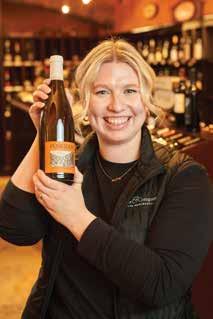
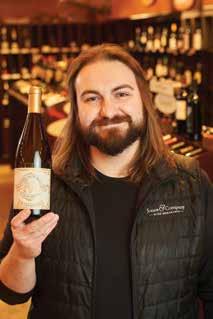
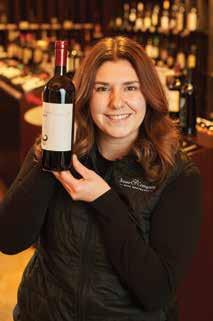
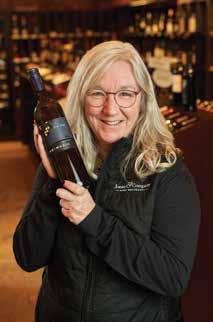
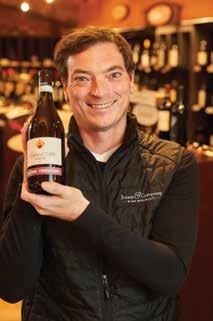
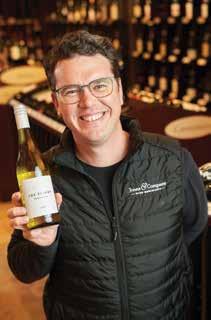 Mike Muirhead: The Flight 2020 Chenin Blanc Western Cape, South Africa ($23.99)
Malcolm Roberts: Giacomo Fenocchio 2019 Nebbiolo Piedmont, Italy ($38.99)
Saralyn Mehta: Primosic 2021 Blue Label Pinot Grigio Friuli, Italy ($21.99)
Ricki-Lee Podolecki: Fabio Motta 2020 Pievi Rosso Tuscany, Italy ($36.99)
Dylan Watkins: Paris Valley Road 2018 Chardonnay California, USA ($25.99)
Abby Pelechaty: Obsidian Wine Company 2018 Poseidon Chardonnay Napa Valley, USA ($49.99)
Apryl Nadeau: Hello! 2021 Pinot Grigio South Australia, Australia ($23.99)
Erika Fridrik: Il Palazzo 2018 Chianti Classico Riserva Tuscany, Italy ($28.99)
Mike Muirhead: The Flight 2020 Chenin Blanc Western Cape, South Africa ($23.99)
Malcolm Roberts: Giacomo Fenocchio 2019 Nebbiolo Piedmont, Italy ($38.99)
Saralyn Mehta: Primosic 2021 Blue Label Pinot Grigio Friuli, Italy ($21.99)
Ricki-Lee Podolecki: Fabio Motta 2020 Pievi Rosso Tuscany, Italy ($36.99)
Dylan Watkins: Paris Valley Road 2018 Chardonnay California, USA ($25.99)
Abby Pelechaty: Obsidian Wine Company 2018 Poseidon Chardonnay Napa Valley, USA ($49.99)
Apryl Nadeau: Hello! 2021 Pinot Grigio South Australia, Australia ($23.99)
Erika Fridrik: Il Palazzo 2018 Chianti Classico Riserva Tuscany, Italy ($28.99)


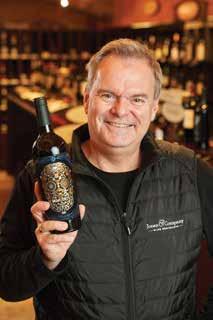

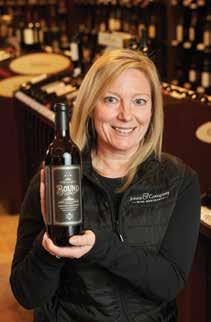
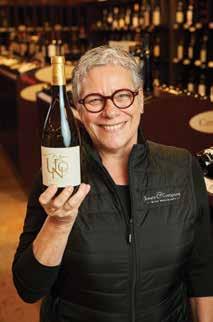


One question that we will get asked all the time is where to invest money, RRSPs or TFSAs.

The choice between an RRSP and a TFSA will depend on your individual circumstances and financial goals. Maybe you are looking to save for retirement and want to take advantage of tax deductions on your contributions. Or perhaps you are more interested in tax-free growth and withdrawals. A consultation with Rawluk & Robert CPAs will put you on track for a savings strategy tailored just for you.
Phone: 204-237-6053
e-mail: admin@accountants.mb.ca
www.accountants.mb.ca
Planning starts with a focus on the bigger picture.
At Lawton Partners, we guide our clients with insight and experience. We believe it’s important to be leaders in our community as well as in business.

You belong in the company of leaders. lawtonpartners.ca

The Pike family legacy started in Australia 136 years ago, when Henry and Emma Pike brought their family from Dorsetshire, England, to settle in the Adelaide Hills in Southern Australia. Henry began working as a builder at Johnston’s Brewery and made his own ales on the side. His beers became popular and eventually marked the dawn of the family business, H. Pike & Son. As an homage to his name, his country, and his favourite hobby, Henry used a northern pike as the logo for his beers. That logo is used to this day.
The family business evolved through generations: the Pikes went from brewing beer to creating craft tonic and cordials to running vineyards—and eventually, they moved into wine production. From generation to generation, Pikes have shown a talent for producing quality, thirst-quenching beverages.

Edgar Walter Pike (Henry’s great-grandson and Andrew and Neil’s father) was the first in the family to grow and sell grapes. After some difficult times following World War II, Edgar became the manager of a corporate vineyard, and he eventually purchased a vineyard of his own. Like his great-grandfather, he worked hard to make a name for himself in the industry and continued the tradition of keeping the business in the family.
Brothers Andrew and Neil Pike opened the first family winery in the 1990s. In December 2022, Andrew and his wife Cathy retired, handing the reins over to their son Jamie, who is the new Managing Director of the winery (their other son, Alister, manages the Pikes Beer Company). The family continues to innovate: in one successful experiment, the winery introduced Italian grapes in their vineyards. “The winemakers were getting bored and wanted a challenge,” explains Pete Bentley, Pikes Sales & Export Manager. “They were inspired by the landscapes of Italy, which are very similar to the landscapes in the Clare Valley. The team was excited to see how native Italian grapes would perform in Australia.” It turns out that they perform very well: Jones & Company is excited to stock Pikes Luccio Rosé ($24.99), made with Sangiovese, and Luccio Pinot Grigio ($24.99), both the result of this venture.
Beyond their innovations in grape varieties, the family is looking for the quality factor in higher-altitude vineyards. Pete shared that the family is always looking for vineyards at higher altitudes. Their focus is the Clare Valley, where altitudes range from 300 m to 500 m above sea level. While this may not seem as remarkable as Argentina’s elevations, it still makes a considerable difference
in this part of the world. Greater temperature variations occur at higher altitudes, making days intensely hot, while at night the temperature plummets. This dramatic shift helps to build the complexity of the wines and preserve acidity. Differences in soil types matter as well: poor soils in higher-altitude vineyards promote the growth of grapes that produce complex wines. Pikes Polish Hill River Estate is located at an altitude of 450 m above sea level—higher than both the Clare Valley and Barossa Valley floors. It’s a fantastic place to grow outstanding Rieslings—like the Pikes Traditionale Riesling ($28.99).
Pikes grows over 20 different grape varieties in its vineyards. This wide range of wines is represented by 11 Pikes wines on the Jones & Company shelves. These wines show what is possible when you start at the valley floor and move up the hill to higheraltitude vineyards.
On March 8, Pete Bentley of Pikes Vintners will be visiting Jones & Company Wine Merchants to share our collection of Pikes wines at an in-store tasting. He will also host a Wine Pairing Dinner on Thursday, March 9 at Preservation Hall. Watch our social media pages for ticket details: @joneswinemerchants

BUSINESS IS GROWING IN WINNIPEG’S SOUTHWEST.







Situated just outside of city limits in the Rural Municipality of Macdonald, the site is just minutes away from the retail, commercial, and residential amenities at Kenaston & McGillivray, and only three and a half miles from major transportation corridors. A newly installed light-controlled intersection at the entrance ensures the safe and efficient flow of traffic.
NOW SELLING PHASE 2 LOTS!
PHASE 1
5. Proposed Phase 3 5. Proposed Phase 3 5. Proposed Phase 3
• Fully serviced lots range from one to five plus acres with underground hydro, gas, sewer, water.

• Bell MTS and Shaw high-speed fibre optic services available.
• Paved asphalt roads.
• Lake lots feature the added benefit of fire suppression capability.
• Design Standards criteria ensure long-term value protection for lot owners.
AVAILABLE
For more information, please contact: Shawn Alwis | President | McGillivray Business Park (204) 489-3822 | salwis@t2kenterprises.com

High-altitude vineyards are not an innovation in wine. Mountainous regions like Alto Adige in Italy and Ribera del Duero in Spain have been producing wines for centuries. However, in the last 20 years, there has been a significant drive up the hill and to new heights in New
World countries such as Argentina and Chile. These wine regions have, in return, brought significant attention to high-altitude wines. So what do these dizzying heights mean for grapes and grape growing? Let’s look at the factors that make high-altitude wines different.
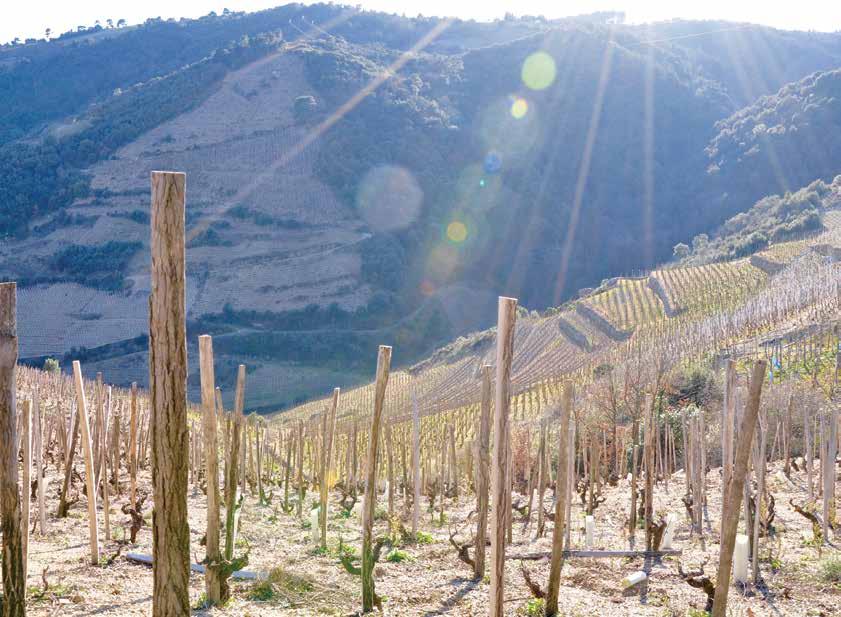
The first time I went skiing in the Rockies, I was surprised when I took off my goggles and saw my reverse raccoon eyes. How could I get a sunburn in the middle of winter at -15°C? The answer is sunlight intensity. The higher the altitude, the more intense the sun’s rays (and, in particular, UV-B light). This intense light has a dramatic effect on grapes, creating thicker skins to protect the berry against the harsher sunlight. Thicker skin contains more colour pigment and tannins, which produces vibrant dark wines with the ability to age.
Intense sunlight gives MALBEC its signature colour.

Altitude is a great moderator of temperature. As wine regions struggle with climate change heating up their vineyards, one of the answers is to move up the hills. Temperature variation comes in two forms: the first is that the higher you go, the lower the average temperature is. Most grapes benefit from a long growing season, and as global temperatures increase,

harvest at lower elevations is happening earlier and earlier in the year. In addition, much larger day-to-night (diurnal) temperature variations at higher altitudes mean that the grapes stop ripening during the evening, allowing the berries to maintain higher acidity compared to their lower-altitude counterparts. This “freshness” that comes with wines of altitude adds to a wine’s balance and complexity, also lending longevity to the final product.
Greater shifts in daytime and nighttime temperature (called diurnal shifts) accentuate SAUVIGNON BLANC’s signature racy acidity.

On a trip to Chile 15 years ago, winemakers we met from the best estates were eager to show us how they were moving “up the hillsides” in an effort to create better wine. Planting grapes on the valley floor meant that vines could be easily harvested by machine, the grapes had plenty of access to water, and they grew in the rich valley floor soil. There is an inverse rule with grapes, however: the more the vine struggles, the better the quality of grapes. Steep, rocky slopes mean that water drainage is quick, and the vine focuses its efforts on deep-soil roots to seek out hard-tofind water and minerals. A lower-yielding plant puts more effort into fewer berries, and this equates to more complex and concentrated fruit.
When grown on steep slopes with rocky soils, CHARDONNAY shows minerality and heightened complexity.
To fully demonstrate how altitude affects wine and winemaking styles, we turn to one of the leaders in high-altitude wine research: Argentina. Malbec has found a unique home in the region, and the wines are significantly different from the styles of their ancestral home of Cahors, France (alt: 219 m). We compared two wines that use similar winemaking styles to truly focus our comparison on the difference altitude makes.
Pulenta I Malbec (Mendoza, $36.99): Before the foothills of the Andes, you will find beautiful, rolling plains; however, in this case, those rolling hills just happen to rise to 1,200 m above sea level. The Pulenta I is a textbook high-altitude Malbec: it is a deep, dark red in the glass with black fruit, dark chocolate, and spice box on the nose. On the palate, it is heady, warming, and rich, with chalky tannins that fill the mouth.
Amalaya Territorio Malbec (Salta Province, $22.99): Move up 500 m and you will reach the dizzying heights of Territorio at 1,700 m. While this wine still has the trademark dense black colour, the nose hints at something different. Over the dark berry fruit, there is a layer of floral and slate on the nose. On the palate, there is a freshness that makes the wine mouthwatering and savoury—a quick peek at the alcohol also shows 1% less than the lower-altitude Malbec, and the palate is harmonious and inky.

In some cases, the vineyard’s altitude can dictate the style of wine that is created. For this example, we looked at the same producer creating a Valpolicella blend. The first is a wine created from lower, rolling hills; the second wine, grown in a single vineyard on steep slopes 300 m higher up, simply could not produce its special attributes at a lower altitude.
Tedeschi Lucchine Valpolicella Classico (Veneto, $21.99): This red is a great example of entry-level Valpolicella—a classic blend of Corvina, Corvinone, Rondinella, and Molinara. It is a bright ruby red, and the nose shows fruit salad, red cherry, and cranberry. On the palate, it is light and refreshing—a wine that should be enjoyed young and slightly chilled.
Tedeschi Maternigo Valpolicella Superiore (Valpolicella, $43.99): Following a similar blend of Corvina, Corvinone, and Rondinella, the difference is seen in the depth of colour. A darker garnet in the glass comes with more extraction; the aromas of cherries and cranberry remain but are joined by plums, figs, and a layer of mineral and herbal notes. On the palate, it is quite complex and layered with dusty tannins and a long, elegant finish. It’s hard to believe these are the same grapes from the same producer.

The term “high altitude” is relative in each region—some grapes experience high-altitude conditions a few hundred metres above sea level, and some grow up the slopes of the great Andes. It is the conditions of sunlight, diurnal temperature, and soil that produce wines of great complexity. See below for an idea of the relative high and low altitudes in some of the world’s most renowned regions.
highest altitudes at which vines are grown
lower-altitude vineyards

Introducing the newest Civettina to the family...
Civettina (chi-veh-TINA) is made from grapes hand selected by Tina Jones. Just ask us for the wine Tina made!
TERRE SICILANE IGT Photos by Ian McCausland
Photos by Ian McCausland
When Chef Cameron Huley was 6 years old, he didn’t waste his time watching cartoons—he was already preparing for his future career under the tutelage of legendary 80s Canadian TV chefs Stephen Yan (Wok with Yan), James Barber (Urban Peasant), and the singing chef, Pasquale Carpino (Pasquale’s Kitchen). Chef Cameron graduated from Culinary Arts at Red River College and gained his Red Seal at culinary school in Niagara Falls. He represented Canada on the ice carving team at the World Ice Art Championships in Belgium before returning to Winnipeg to cook at the St. Charles Golf and Country Club under renowned Executive Chef Takashi Murakami C.M. He has held the role of Executive Chef at Four Points by Sheraton, Larters, and the Winnipeg Squash and Country Club. He has also taken his skills abroad, as Executive Chef aboard a Celebrity Cruise Lines ship, travelling the Mediterranean and the Caribbean and working a stage in Japan under Chef Kiba at Bois et Dupont.
Chef Cameron’s tenure at Blaze Bistro at the Delta Hotel began in the fall of 2022, where he joined an enthusiastic hospitality team, headed by GM Jacques Lavergne. “We’re absolutely thrilled to have someone join us with the culinary pedigree that Chef Huley brings to the table,” says Jacques. “He’s established a strong base of foodies that have followed him over the years and we look forward to hosting them at Blaze Bistro.”
Your vision for Blaze Bistro: We have been working on our wine program, and, in addition to our entrée menu with classic items like Coq au Vin and healthy options like the vegan Mushroom Buddha Bowl, we offer small plates like the crispy Humboldt squid and Korean Bibimbap pork and shrimp meatballs with XO toast. Our wine bar is a perfect destination for an after-work drink or a quick bite before a downtown event.
The secret ingredient in your fridge: Fish sauce: it’s salty, fermented, and gives a dish a little kick.
The most interesting current food trend: I love cooking over a wood fire or coal.

Your profession if you weren’t a chef: I would be a police officer or a firefighter. In the town where I live, I am a volunteer firefighter (I have level 2 firefighter certification) and an auxiliary police constable.
Favourite wine: Ventisquero Pinot Noir Reserva (Chile).
Favourite kitchen gadget at home: My knife does it all.
First meal you remember that made a real impression on you: Seared foie gras with miso-marinated sablefish and teriyaki sauce made by Chef Murakami at St Charles.
Favourite food travel destination: I spent a month cooking in Japan. Chef Murakami connected me with Chef Kiba at Bois et Dupont, and I would love to go back and work there.
Guilty pleasure: McDonald’s cheeseburgers.



Grapes grown at high altitudes make distinctive wines; the best, like other top wines, have fine balance, complexity, and age-worthiness. However, all refinement can be obliterated in wines consumed at high altitude. In fact, even top Sommeliers face a tremendous challenge in finding wines that, when sipped in the confines of an airplane, reach their full potential.
Above 32,000 feet, the regulated atmosphere in an airplane cabin resembles that of a mountain desert. The air pressure is low, like one would experience at an altitude of 6,000–8,000 feet. The oxygen in the air can be 20%–25% lower than on the ground—making us lethargic. And, according to Aviation Business News, the relative humidity of 5%–12% causes “dehydration of the eyes, sinuses and mucous membranes; nasal congestion and sinus pressure; altered perception of flavours; and a significant reduction (up to 30%) in smell and taste.” Ouch! When we also consider the loud noise (approximately 85 decibels), constant vibration, proximity of fellow travellers, and plastic “glassware,” we have to admit that these are not ideal wine-tasting conditions. As if that weren’t enough, the highly efficient ventilation system that refreshes, cleans, and circulates cabin air can flush away a wine’s bouquet.
Many airlines are working hard to provide an optimal food and wine experience. Foods can be adapted by increasing levels of umami or spiciness, but wines come as they are and must be selected for the conditions. Singapore Airlines, renowned for its culinary program, takes its wine selection seriously: it employs a panel of two Masters of Wine and a famous wine writer (Oz Clarke) to evaluate wines in a pressurized chamber that mimics the airplane environment. Similarly, Lufthansa Airlines commissioned extensive tasting experiments controlled for air pressure, relative humidity, airplane noise, and vibrations. Their results, combined with good old-fashioned experience, support an industry-wide belief that successful in-flight wines are fruity with low acidity and tannins: Argentine Malbec and New World Chardonnay are typical examples. Sadly, wines with subtle complexity, such as fine, mature reds, fare poorly because the cabin cacophony overwhelms their delicate charms.
Sparkling wines, including Champagne, are favoured by some commentators, possibly because bubbles bursting on the tongue release wine aromas that flow directly from the mouth to olfactory sensors in the nose, giving a fuller impression of the bouquet. Others suggest that the high acid and lean flavours of sparkling wines make for an unpleasant experience. Clearly, and happily, personal experimentation is needed to answer this question.
Air Canada’s consulting Sommelier Véronique Rivest brings a traveller-centred approach to tasting at altitude: “Simple answer: make them happy. Offer wines that will be uplifting rather than tiring. I aim for lighter and fresher wines (even among full-bodied options) so wine brings a sense of freshness and not heaviness.” Perhaps Véronique’s emphasis on comfort is a shorthand way of dealing with the phenomenon of cross-processing that occurs among our senses. For example, loud noises, including music, diminish our ability to taste sweet or salty but increase the impression of umami and crunchiness. Such considerations led British Airways to experiment with nasal sprays (this proved unpopular) and soundtracks played through noisecancelling headphones to enhance flavours.
Passengers benefit from airplane manufacturers’ continuing efforts to build more comfortable planes with slightly higher cabin air pressure, less noise and vibration, and draft-free and fresher air. A little mood lighting could also help—wines taste fruitier under red lights, spicier under blue or green.
You can also do a few things to maximize your vinous enjoyment at altitude. To combat dehydration, drink plenty of water; ask for a hot beverage and breathe in the rising steam; keep lips, skin, and eyes moisturized; and consider wearing a mask, which helps trap the moisture that you exhale. In addition, maintain an open and positive attitude toward airline wines but expect familiar wines to taste different. And, finally, if you have the wherewithal, to enjoy the best wine selections and tasting ambiance, book business or first class!
Trust Manitoba’s most awarded master renovator and custom builder to bring your dreams to life.

Backed by our team’s over 200 years of combined experience, we offer the gold standard in custom homes, luxury home additions, sleek kitchen and bathroom makeovers, heritage renovations and restoration—and, of course, the finest in wine cellar design.



We are proud to give back to our community through the Harwood Foundation.
HarwoodBuilders.com

There’s no better way to experience Winnipeg than with WOW Hospitality.

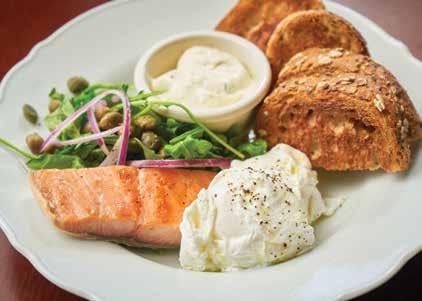
WOW has been a part of Winnipeg’s culinary landscape for over 25 years. Our awardwinning chefs offer a variety of cuisine styles, and we are an intrinsic part of every neighbourhood that welcomes us. We inspire Winnipeggers to explore new corners of the city in their quest to be our guest. Thank you to Winnipeg for all of your support.


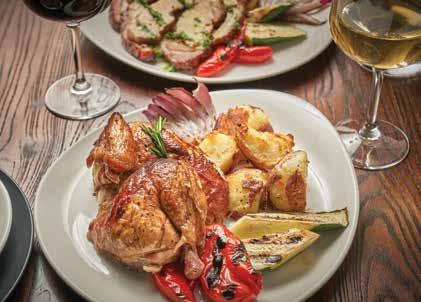
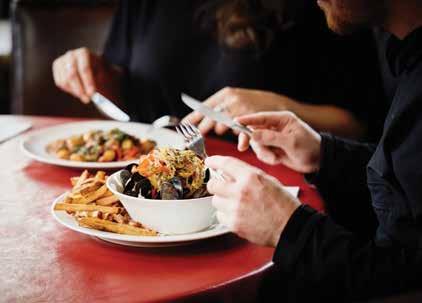
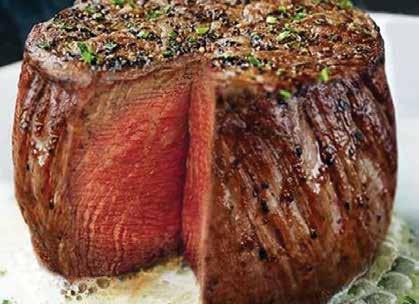
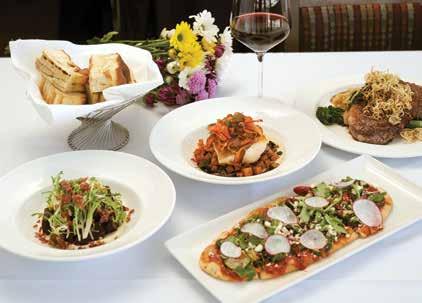
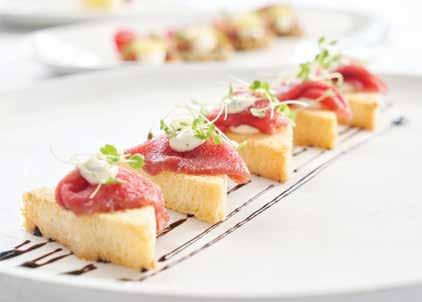







Do you think you know Pinot Grigio? Everyone knows this white as an easy-drinking style, sure, but it is hardly a trend, right? You might be happy to know that Pinot Grigio is on the rise—and we are not talking about the well-known face of this variety.
Pinot Grigio has been both famous and familiar for a while, and oceans of straightforward, unpretentious Pinot Grigio are everywhere. Modest Pinot Grigio is easy: it is easy to quaff on its own, priced so it is easy to open on a Tuesday night, and easy to pair with everything from appetizers to popcorn. A big part of that charm is in its neutral character, made from earlier harvested fruit from easy-to-manage vineyards. As our Vice-President Mike Muirhead often says, Pinot Grigio is the Goldilocks wine—not too tart, not too aromatic, not too alcoholic, and not too sweet—juuuust right.
But what is trending is the classic style of this variety, which is full of incredible depth and a complexity that takes it from easy to extraordinary. Classic Pinot Grigio displays why this grape is a noble variety, with rich, ripe fruit character; softly balanced acidity; and a fuller body. These wines are worth our attention—and they are getting a lot of it.
Pinot Grigio is a mutation of Pinot Noir, the “grey” Pinot, making it Gris in French, Grigio in Italian, and Grauburgunder (“grey Burgundy”) in German.
In France, especially in Alsace, vignerons have long been planting Pinot Gris in some of their best vineyards. Here, the magical combination of steep, sunny hillsides, special soils, noble varieties, and climate contribute to wines of incredible harmony and elegance. Alsace Grand Cru Pinot Gris is an art form unto itself: rich, succulent, fuller bodied, and capable of drawing us into a conversation about its beauty.
For a lovely example, Zinck in Alsace farms organically on the estate vineyards that have been in the family for generations. Zinck Portrait Pinot Gris ($29.99) is ripe and juicy, reminiscent of Anjou pears, with a slightly smoky edge, beautiful weight, and a long finish.


Across the German border, Pinot Gris (Grauburgunder) is something special, particularly in the hands of the Lingenfelder family in the Pfalz. From a choice single vineyard, the Lingenfelder Grauburgunder ($33.99) shows lovely aromatics of ripe fruit with soft acidity, incredible balance, and impressive length.
In Italy, Pinot Grigio is not just everyday fare—it is also capable of elegance and complexity. In the north are the higheraltitude vineyards of Trentino-Alto Adige, where wines offer ripeness balanced by engaging vibrancy and palate-filling depth. Girlan, whose vineyards are south of Bolzano and the Alps, produces Pinot Grigio ($31.99) that is soft and aromatic with bright fruit, floral, and herbal tones. Further east, from hillside vineyards close to the Slovenian border, the Primosic family produce their Collio Pinot Grigio ($30.99). It is aged in old oak for a wine of weight as well as elegance. In the same region, Russiz Superiore Collio Pinot Grigio ($49.99) also shows off what is possible from these hillsides. This complex white is textured, with many international accolades to its credit. And even “everyday” Pinot Grigio can surprise us. Umberto Baccichetto makes a beautiful Pinot Grigio under their Berto & Fiore label. On our first taste, we expected the price to be double what it is (an incredible value at $19.99). It is a wine to love, every day.
This amazing Pinot Grigio is a trend worth chasing. A premium bottle is an affordable luxury, ready for the next dinner party to take you from easy to extraordinary.
Whereas everyday Pinot Grigio is a nice companion to popcorn and patios, these classic wines can be the star of the evening, beautiful with:
• Pasta with mushrooms, either with cream or white wine sauce
• Onion tarts and eggbased dishes
• Cheese dishes
• Seafood and shellfish, grilled or poached
• Grilled salmon
• Roast pork loin
• Indian cuisine
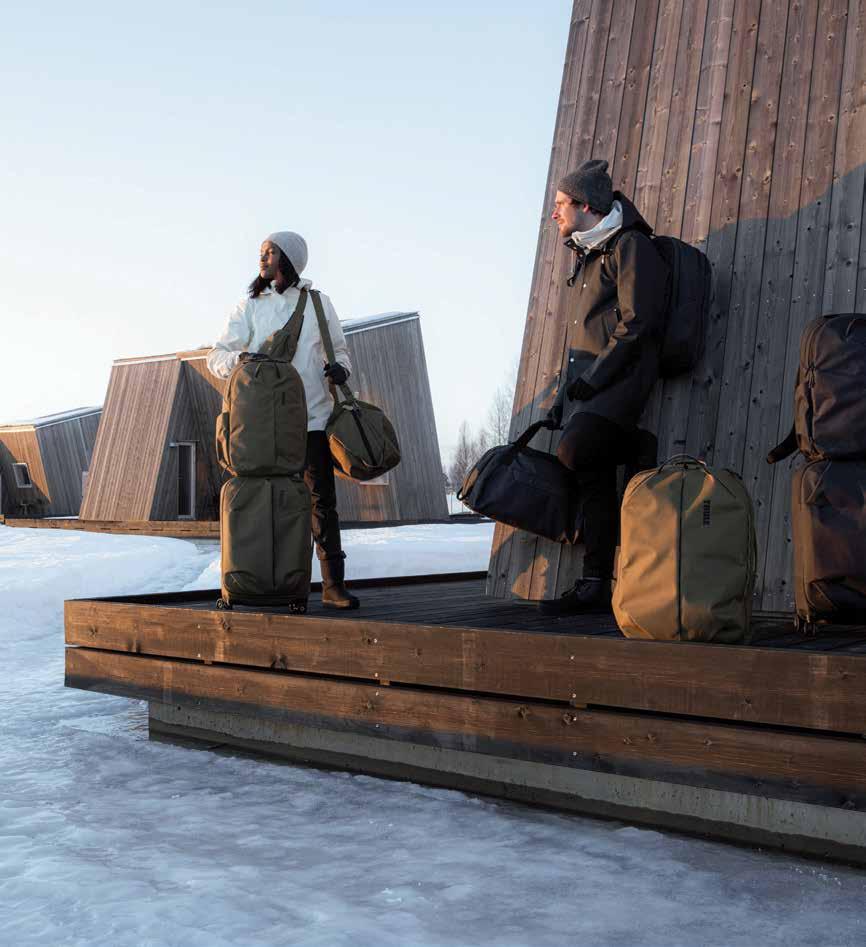


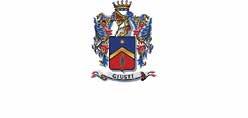
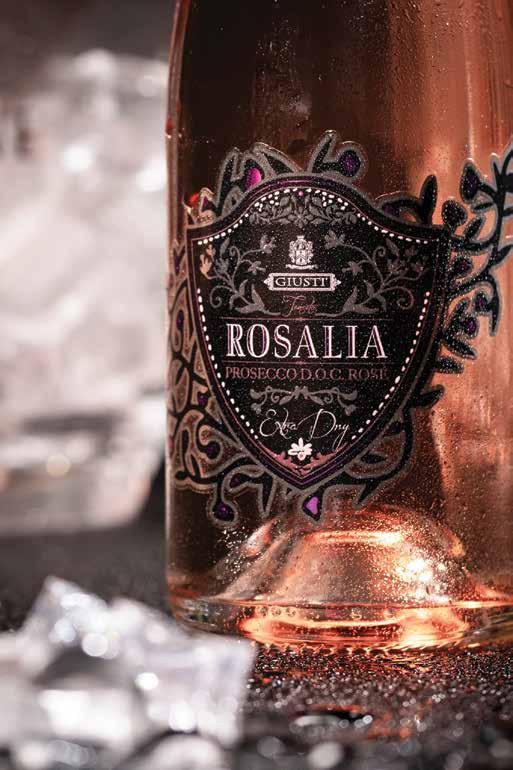
The ideal bubbles for any occasion.
 by Graziana Grassini
by Graziana Grassini
Tradition and innovation meet to create the Prosecco of the future. Hand-selected grapes from the best estate vineyards. 100% Glera, 0 sugar and 8 months on lees produce our flagship Prosecco with a unique flavour.

We are very lucky in our industry: there are few jobs where business trips mean visiting vineyards and talking to winemakers. Like any trip, what you bring home are the experiences and the people you’ve met. We have been lucky to make some amazing connections over the years, and sometimes those connections turn into friendships.
When we travel to Napa, we always look for our Next Big Thing. We look for wines and people that represent the place and feeling. So when we first tried the Moone-Tsai wines, we were enamoured by their presence and elegance, and we sought out a meeting with the owners. From our first meeting, Larry and MaryAnn Tsai not only welcomed us, but they also shared our love of wine and all that goes into creating it.
When you meet Larry and MaryAnn, it is easy to be fooled by their laid-back demeanour. But once you start digging into their accomplishments, their success in winemaking makes sense. MaryAnn’s pedigree in the Napa wine industry comes from over 20 years of building one of Napa’s most famous family wineries: Beringer. In her time at Beringer, MaryAnn helped create three wines that were awarded Wine Spectator ’s coveted Wine of the Year. Larry, a lover of wine and its intricacies, came to the industry after a successful career as a management consultant, where he built brands for companies like Kraft and Nestlé. He talks about his wines with such passion and reverence that they feel like branches of his family.


Larry and MaryAnn have come to Winnipeg to pour wine and meet our customers—and we have sent many friends to visit them in Napa. So when it came time for Jones & Company to find our Next Big Thing, we used one of the oldest tricks in the book: we asked our friends to hook us up.
Without hesitation, the Tsais put us in touch with their close friends, Philippe and Cherie Melka. We were looking for another family winery to add to our selection, and this was a natural fit. Philippe is the consulting winemaker for MooneTsai, but he also works with other icons, such as Bryant Family Wine, Dominus, and Hundred Acre. He has been credited with many 100-point wines in his career. Cherie
is a self-taught enologist with a microbiology background who has worked in the labs of Ridge Vineyards, Beaulieu Vineyard, and Silver Oak. We jumped at the chance to talk with Cherie and Philippe, and—with a good word from Larry and MaryAnn—they gave us Manitoba’s first allocation of their Melka Estates wines. (You can read an interview with Philippe in our “Big Reds” issue of The Cellar Door.)
We consider ourselves fortunate to have met the Tsais and the Melkas—and added them to our circle of wonderful people who happen to make great wine. We are excited to share their wines with our wine-loving customers here in Manitoba.
What started as an altitude comparison of Howell Mountain’s high elevation versus the valley floor of the St. Helena AVA ended up being a tasting of Napa superstars who are each in their own league—regardless of elevation.

Moone-Tsai 2017 Howell Mountain Red ($299.99): In the glass, this blend is nearly opaque with a youthful garnet rim. The nose is intense and entwined with black current, fresh plums, dark chocolate, Earl Grey tea, pencil lead, and muted red flowers. This wine was aged 18 months (30% in New French Oak)—the vanilla and cigar box on the palate attest to this luxurious barrel program. Both gripping and supple on the palate, the wine is lovely to drink now but would benefit from 3–5 years of extra bottle time and could be enjoyed well past 2030.

Melka Estates 2018 Métisse Jumping Goat Vineyard ($349.99): From the St. Helena AVA on the valley floor, this wine shows Philippe’s depth and touch in winemaking. Dark with a deep ruby rim, aromas jump out of the glass on first smell: deep, concentrated fruit; dark blackberry; cassis; tobacco; and a hint of menthol on the end. The longer this wine spends in the glass, the more it opens up, with layers of sage, violets, and raspberries. The wine is lush on the palate with fine, silky tannins that will only become smoother with age. The palate is rich but not heavy, with a mouth-watering finish of layered perfume and fruit. With only 375 cases produced, it is a special bottle for any cellar. Enjoy it over the next 15 years.








 By Jill Kwiatkoski, Sommelier (CAPS)
By Jill Kwiatkoski, Sommelier (CAPS)
When you think of travelling to Italy, you may think of sitting in a little piazza sipping the perfect espresso, strolling down ancient cobblestone streets, eating the best pasta you will ever have, a romantic gondola ride down the canals of Venice, and all the Gucci and Versace you could dream of buying. And then there is all of the absolutely amazing Italian wines you will discover! But
there is one thing that you should most definitely put at the top of your to-do list in Italy—and that’s DRIVE!
I planned a road trip to two of my favourite northern regions in Italy—Veneto and Trentino-Alto Adige—and saw these regions in a completely new way. There were no organized bus tours or cruise ships on this ride—just the open Autostrada , ready to explore! Andiamo!
When touring Northern Italy, I suggest flying into Venice’s Marco Polo Airport and picking up your rental car there. This airport couldn’t be more tourist-friendly and easy to navigate. Set up the car’s navigation system—or, if you have a good co-pilot, use Google or Apple Maps—and off you go. As you set off, you need to come to terms with one thing: you will get lost at some point—and that’s okay. Getting lost is a matter of course when driving in Italy—it is extremely easy to miss a turnoff or ramp when you’re going 130 km/h! And getting lost in a little Italian town could turn into one of your favourite travel days. Those are the moments when you just roll with it and enjoy the adventure.
Leaving Marco Polo Airport, head to the Autostrada, and you are soon in the heart of Veneto—the land of plenty. Veneto is a diverse region with mountains, lakes, and the sea. It is also home to so many famous cities: Padua (Padova), Vicenza, Verona, Treviso, and, of course, Venice.

Veneto produces the world’s largest quantity of Pinot Grigio, but it is also home to Valpolicella, Amarone, and Prosecco. The region has many draws: the Carnival of Venice, a festival that began in the 1100s, where people don extraordinary artistic masks and dance in Piazza San Marco; the waterways of Venice; the famed Romeo & Juliet balcony in Verona; and so much more. There is so much to see and do in Veneto that you could spend a lifetime exploring it.
The city of Padua is an extraordinary day trip. Park in one of the many lots on the edge of the city and enjoy the sights along the way to the city centre. Drink an Aperol Spritz (garnished with a slice of orange and green olives, of course)—where it was created in the 1950s as a fashionable afternoon cocktail—and experience art, history, music, museums, restaurants, and shops galore. The Palazzo della Ragione medieval town hall has amazing frescos, and the daily market hosts the city’s best bakers, butchers, fishmongers, and cheesemongers. And don’t walk past the grilled octopus food truck without stopping for a taste! Be sure to spare a couple of hours and walk through one of Italy’s most majestic basilicas: Basilica di Sant’Antonio di Padova.
WINE HIGHLIGHT:

Located just outside of Padua in the heart of the Colli Euganei hills, you will find this amazing family-run winery. The Bonato family’s organic vineyards produce varieties such as Pinella, Manzoni Bianco, Cabernet Sauvignon, Cabernet Franc, and Merlot. Taste these amazing wines, see the beauty of their land, and learn about their family’s 100-year winemaking history.
WINE HIGHLIGHT:


Southwest of the city of Bolzano/Bolzen is a cooperative consisting of 200 wine-growing families with only 220 hectares of land among them (that’s just slightly bigger than the size of Assiniboine Park). This small community of growers helps head winemaker Gerhard Kofler create the awardwinning Girlan Pinot Grigio, Chardonnay, and Pinot Bianco that will be hitting our shelves this spring!
Now we point our car north to Alto Adige, a unique region that borders Switzerland and Austria. Surrounded by the magnificent snow-capped Dolomite Mountains, the drive through Trentino to Alto Adige is one of the most stunning in Europe. As you pass the small villages tucked into the side of a mountain, you notice that life and culture feel different here from other parts of Italy. With its heavily Germanic/Alpine influence, you will swear you are not in Italy anymore. It is truly incredible to see how the cultures blend and watch the architecture, food, and wine shift to Alpine styles. It’s like visiting three countries in one! Most of the locals speak both German and Italian, though German is actually more dominant. Even wineries use both German and Italian names for grape varieties on the labels (Pinot Grigio is Grauburgunder in German). Alto Adige is also a haven for those who love to rock climb, kayak, cycle, and hike. The Dolomite Mountains are a playground for outdoor adventurers.
The mountains also greatly influence the grape varieties and wine styles that thrive here. The land is difficult to harvest on the edge of a mountain—and real estate is hard to come by. The quality and quantity of wine produced in Alto Adige are second to none. White grape varieties like Pinot Grigio, Pinot Bianco, Gewürztraminer, and Chardonnay, and red varieties like Pinot Noir, Schiava, and Lagrein thrive in this region. The minerality, acidity, and freshness are unbeatable.
After spending a few days in the mountains, it is time to head south and back over to Veneto for the last leg of our road trip. After leaving the incredible mountain range of Trentino-Alto Adige, make the 2.5-hour journey to the impressive Cantina Giusti in the heart of Prosecco. The innovation and technology are mind-blowing. Owner Joe Giusti—a native of the area who spent the better part of his life in Calgary—has created the most sophisticated and advanced winery I have ever visited. He also shows deep respect for the land he grew up on and the people who tend the land and work in the winery. Make the stop at Cantina Giusti in Nervesa della Battaglia and you will be impressed by their spectacular country house bed and breakfast.


We are honoured to carry an array of bubbles, whites, and reds from fellow Canadian Joe Giusti. His Proseccos (Rosalina white and rosé, Graziana, and Asolo) and Spumante are refreshing and vibrant. White blends like Bianco Sant Eustachio are perfect to sip on or pair with lighter dishes like appetizers, soft cheeses, and seafood dishes. His Valpolicellas and red blends (Antonio, Massimo, and Recantina) are robust, rich, and the perfect accompaniment to richer Italian cuisine.
The drive back to the airport isn’t far, so leave time to explore the seaside along the way. Stop to eat some local seafood near the lagoon and take a detour to one of the amazing seaside towns before you make the lovely (and short!) drive back to Marco Polo Airport in Venice. You can return the rental car because you won’t need it for your last couple of days in Venice. It is time to stretch those legs and enjoy the beauty and wonder of Venice—strolling over the canals. That singing gondola ride is a great way to say arrivederci to your new favourite destination.
Buon Viaggio!


What does it mean to shop local, globally? We all know what it is to shop local, but when you buy wine at Jones & Co., you’re supporting another small business, a farmer, a good friend of ours from around the wine world.



You won’t find multinational drink companies at Jones & Co. In 2020, we decided to concentrate on supporting our favourite small farmers and wine families.
We can tell you a story about every wine in our store.
That is how we shop local, globally.
Elena Pozzolini, Tentua Sette Cieli Tina Jones with Maria & Joe Giusti, Giusti Wine Pablo Cortes & Karen Eisner, Winery On CreationsCivettina (chi-veh-TINA) is made from grapes hand selected by Tina Jones. Just ask us for the wine Tina made!
Civettina (chi-veh-TINA) is made from grapes hand selected by Tina Jones. Just ask us for the wine Tina made!
Available exclusively at
Winter days call for steaming pots of comfort food to share with family and friends. We gathered three of our favourite wine experts to put together a vegetarian and vegan-friendly menu of hearty winter meals. Sylvia was inspired by local ingredients to create a hearty Manitoba lentil stew with white bean hummus. Dylan folded wine right into his pasta dish, with red wine ravioli stuffed with sweet potatoes and finished in a simple coconut cream sauce. For a meal of smaller plates, Ricki-Lee created a beautiful beet carpaccio and a vegan stuffed mushroom dish in a rich sun-dried tomato coconut cream sauce. Dylan and Ricki-Lee have also provided recipes for creating your own vegan feta and parmesan substitutes. And to top off your plant-based feast: all of the paired wines are also vegan!

Serves 6
2 carrots, peeled and diced
1 celery stick, trimmed and chopped
1 large sweet onion, peeled and chopped
1 tbsp Herbes de Provence-infused olive oil
2½ cups Puy-style Manitoba green lentils
4 cups vegetable stock
½ cup red wine

1 bay leaf
1 bunch of fresh thyme, leaves stripped
3 leaves of fresh sage, chopped
1 pinch Herbes de Provence
2 cups fresh spinach leaves
2 tbsp red wine vinegar
sea salt and freshly ground pepper
Sauté carrots, celery, and onion in a stove-top pot, conceivably one that will take the stew to the table. When the vegetables are nicely soft, but not yet browned, add the lentils, broth, bay leaf, and wine. Bring it all to a boil and simmer for about 40 minutes, stirring regularly. While it is cooking, add the herbs. Once the lentils are soft and the consistency is stew-like (rather than soup-like), add the spinach and simmer for 2 minutes until wilted. Finish with red wine vinegar and season to taste.
Suggested sides: Roasted butternut squash, roasted baby carrots, sautéed cremini mushrooms with Sherry, sweet peas with butter.
White Bean Hummus
1 can white beans
2 tbsp Milanese Gremolata Olive Oil
½ tsp tahini
½ lemon, juiced
1 clove garlic
sea salt to taste
In a food processor, purée garlic, then add beans, tahini, and lemon juice. While the processor is running, drizzle in olive oil until it forms a smooth dip. Taste and add salt as needed.
SHOP LOCAL:
Lise Belanger and Michael Graham at Frescolio Fine Oil + Vinegar Tasting Bar offer their infused extra virgin olive oil and balsamic vinegar suggestions to enhance our recipes. If you have not visited one of their locations lately, you can use a good quality extra virgin olive oil in any of these recipes.


Serves 6
½ block of firm tofu
1 tsp paprika
½ tsp cayenne pepper
pinch red pepper flakes
1 tsp thyme
1 tsp oregano
2 tsp nutritional yeast
2 cups salt and pepper to taste
1 tbsp olive oil

10 large cremini mushrooms
Preheat the oven to 375°F. Press the tofu on a paper towel for 10 minutes to remove some of the moisture. Hollow out the mushrooms, setting aside the stems and scraping out the gills with a spoon. Finely dice the stems and put them in a bowl. Crumble the tofu and add to mushroom stems, tossing with the spices, nutritional yeast, and olive oil. Place on a sheet pan lined with parchment paper and bake at 375°F for 20 minutes. Cool slightly, then fill each mushroom cap with the vegan sausage filling.
2 tbsp olive oil
½ yellow onion, diced
10 sun-dried tomatoes in oil, chopped
4 garlic cloves, minced
1 tbsp paprika
1 tsp cayenne pepper
pinch red pepper flakes
1 tbsp thyme
1 tsp oregano
2 tbsp nutritional yeast
salt and pepper to taste
2 cups baby spinach
1 can coconut milk or oat cream (not lite)
1 tsp cornstarch (optional)
Heat an oven-safe pan on medium heat. Add olive oil and sauté yellow onion for 5 minutes, until the onion is soft and translucent. Add the sun-dried tomatoes and cook for 4 minutes. Toss in the garlic and spices and sauté for 2 minutes. Whisk in the coconut milk and simmer for 8 minutes. If the sauce doesn’t thicken, add cornstarch dissolved in water and stir for 2 more minutes. Add the spinach and simmer in the sauce until it is wilted.
Nestle the stuffed mushroom caps in the sauce. Place on the middle rack of the oven and bake at 375°F for 10–15 minutes until the mushrooms become tender.
Garnish with parsley and parmesan (see page 53 for our vegan parmesan recipe).
Sun-Dried Tomato Cream Sauce PAIR WITH: Innocent Bystander 2021 Pinot Gris Yarra Valley, Australia ($27.99) Ventisei 2019 Bianco Tuscany, Italy ($20.99) Demuerte 2021 Classic Yecla, Spain ($29.99)
Serves 6
2 medium beets, roasted and peeled
1 tbsp olive oil
1 tbsp 18-year aged dark balsamic vinegar


½ lemon, juiced
1 tbsp brown sugar
1 cup arugula
cup pine nuts
cup feta, cubed
For maximum flavour, prepare the vegan feta and beets a few days ahead of time.
Preheat the oven to 400°F. Wrap each beet in tin foil and roast for about an hour. When beets are done, you will be able to easily slide a knife all the way through them. Allow them to cool completely and then peel.
Whisk together the olive oil, balsamic vinegar, lemon, and brown sugar until the sugar is dissolved. Slice the peeled beets into thin disks (use a mandolin if you have one), and add them to the dressing, reserving 1 tbsp of dressing to garnish. Let marinate for 10 minutes. Place the sliced beets on a plate in a circle—or get creative with your own design. Top with the reserved dressing, arugula, pine nuts, and feta.
½ block of firm tofu, cubed
½ lemon, juiced
½ cup warm water
½ cup apple cider vinegar
1 tbsp dried oregano
½ tbsp salt
Press half a block of tofu on a paper towel for 10 minutes (to remove some of the moisture) and cut it into small cubes. Mix together all other ingredients, add the tofu, and seal in a container. Marinate for a minimum of 2 hours, up to 3 days. The longer the tofu marinates, the more flavourful it will be.
Vegan Feta PAIR WITH: Finca Martha 2020 Cabernet Sauvignon Mendoza, Argentina ($19.99) Pikes Vintners nv Pikes & Joyce Sparkling Rosé Adelaide, Australia ($31.99) Ventisei 2018 Rosso Tuscany, Italy ($20.99)Serves 6
1 large sweet potato
1 tbsp dried oregano
1 tbsp ground thyme
2 tsp smoked paprika
salt and pepper to taste
1 tbsp Butter-infused olive oil
200 ml coconut milk
pinch of nutritional yeast
Peel and cube the sweet potatoes and toss with olive oil and spices. Roast in a 425°F oven for about 20 minutes or until tender. Allow to cool. Combine with coconut milk and nutritional yeast in a blender; blend until smooth.
2 cups all-purpose flour
¾ cup red wine
2 tbsp olive oil
pinch of salt
Combine flour and salt in a bowl, and then slowly add the oil and wine. Turn out the mixture onto a floured surface and knead for about 5 minutes. Wrap dough in plastic and refrigerate for at least 30 min.
Split the dough into two equal balls and roll them out into roughly equal-sized rectangles until almost see-through. Place even dollops of puree along the first sheet of dough,

about an inch apart. Lightly wet the area around each dollop and then lay the other layer of dough over top. Lightly press the dough around the puree to seal and then cut it into neat little squares. Firmly seal the edges of the dough with a fork and lay the ravioli on a parchment-covered baking sheet. Cover with a clean dish towel until ready to use. Boil ravioli in smaller batches for 3 minutes until cooked through, then add to the sauce.
3 cups coconut milk
2 tbsp cornstarch
1 tbsp dried thyme leaves
2 tbsp nutritional yeast salt and pepper to taste
1 cup cherry tomatoes
1 cup spinach
Whisk together coconut milk, cornstarch, thyme leaves, nutritional yeast, salt, and pepper and bring to a simmer. Once slightly thickened, add cherry tomatoes and cook for about 5 minutes, lightly crushing the tomatoes with the back of a spoon. Add spinach and cook until wilted. Add the ravioli and simmer for 1 minute. Garnish with parmesan cheese, or try our vegan version below.
Vegan Parmesan
1 cup raw cashews
½ lemon, juiced
1 tbsp white vinegar


pinch ground mustard salt to taste
Blitz cashews in a food processor or blender until it becomes a fine crumble. Add the rest of the ingredients and blend until it comes together. Form it into a flat circle and wrap in plastic. Chill in the fridge overnight or until firm. Grate over pasta.
Thank you to our favourite local foodie shop, d.a. Niels Gourmet Kitchenware, for providing us with some of the incredible cooking ware we used in this shoot, including the Staub Cast Iron Cocotte and ceramic bowls and large and small Danica Heirloom Element bowls (p. 48).

Academy Hospitality has been feeding Winnipeg for over 15 years. Our goal is to make you feel like family.


Our in-house bakery, butcher, deli counter, new hot plate service bar, and bespoke Chef Dinners for 4 to 40 people make us the downtown destination for a taste of authentic Italy. Join us for a coffee, a glass of wine, or a grab-and-go lunch and browse our huge selection of curated artisanal foods and globe-trotting lifestyle products.
Mottola Grocery at Hargrave Street Market in True North Square.
&
Our founder, Tina Jones, is the chair of the board at HSC Foundation. When you top up your wine purchase by adding a Toonie, Jones & Co will match it.

Tina Jones is passionate about improving health care in Manitoba.
Please support this matching program and help us continue to provide tomorrow’s health care today at Manitoba’s hospital, HSC.
Find out why Tina has been involved at HSC for more than 9 years:
www.hscfoundation.mb.ca.
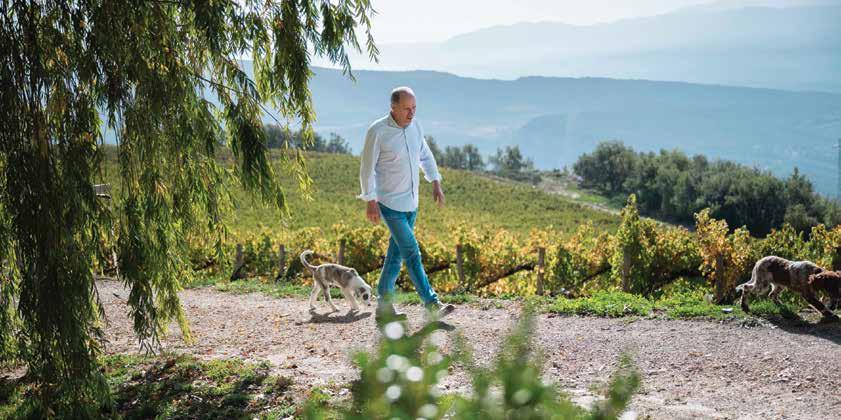 Interview by Gary Hewitt, DipWSET, CWE, FWS, Sommelier
Interview by Gary Hewitt, DipWSET, CWE, FWS, Sommelier
Raül Bobet is an engineer, winegrower, and philosopher. After working with renowned Catalan winery Familia Torres as a technical director and later as CEO, he decided to strike out on his own. Using a careful, scientific approach, he looked for varied terroir to provide grapes with a broad range of characteristics. First, he established Castell d’Encus in Pallars, a high-altitude sub-zone of the diverse appellation Costers del Segre, nestled in the Spanish Pyrenees. There, on terrain covered by underbrush, he discovered shallow stone basins carved and used for winemaking by 12th-century monks. Today, Raül blends grapes from these “gravity rock fermenters” with those fermented using contemporary techniques to create his wines. Second, with partner Sergi Ferrer-Salat, he established Ferrer Bobet in the relatively high, steeply sloped Porrera region of Priorat, Catalan’s most prestigious appellation.
The monks that acquired the land were warriors—they were the Knights of Malta, the army of the Pope of Rome, who took part in the Crusades. And when they asked for land, they always wanted two things: for it to have a religious or spiritual history and water and resources to make wine. They always chose places that were spectacular in some regard.
We know exactly what they were doing in the 12th century because they wrote it all down: they planted in the mountains, never in the valley; they used gravity rock fermenters; and they wrote about the varieties they were
using and their methods. We know from the literature that they were blending red varieties, sometimes with white varieties, but they were called other names. We know that in this area, they planted Hondarrabi Beltza, a Basque name that translates now to Cabernet Franc, which is one of the oldest varieties to exist.
2
What did you have in mind when you were searching for vineyard sites?
My main goal in the 90s was to make wines with more acidity and more longevity, not trying to impress people with fruit, either from the structure or extraction. I began looking for an area where I could find extremely different types of soils, especially calcareous (limestone-containing) soils. At the same time, I could play with the very different altitudes provided by the Pyrenees. The key is not just getting very high in elevation. Sometimes getting too high makes an uninteresting wine. The microclimates, the mesoclimates, the interrelationship between mountains and plateaus—all of these things change what you are going to do.
3
Are there specific challenges to growing grapes at high altitudes?
I know that when I’m getting very high in elevation, in a very cold year, maybe I will not be able to harvest, or the quality is not going to be there because it’s too cold. This is the reality. But you have to play with that, and you have to be humble enough to admit that when you go to a very high elevation, in cold years, sometimes you have to disregard some of what you are thinking. This is why I’m playing with these patches of heterogeneity—which is very easy to say but extremely complex from a human resources and logistics standpoint.
With a brain, a team, and soil, you can create what you want—but you need patience and method. And you cannot forget a holistic point of view. The most interesting variable is finding the music in your mind, and that music is: what type of wine do you want?

4
You have two projects: Castell d’Encus and Ferrer Bobet. Both are considered to be high-altitude projects, even though there’s a considerable difference between them. Can you elaborate on the difference between the two?
There are some similarities. But when we went to the Priorat, we were specifically looking for Carignan (a red vine variety), which has a very good capacity for aging, although the disadvantage is that if the soil is too rich, it is not interesting at all. But using very old vines in very poor soils, in this case, we found magic. So, we were looking for a very specific place. In Porrera, the weather is the coolest, and there is a late harvest. Porrera is also one of the highest areas—though, of course, not as high as the Pyrenees.
First, you have an idea of what you want. If you are playing with Shiraz, you have to decide if you want the spectacular Barossa Valley wines or if you want a style that plays more to a Côte Rôtie or Saint Joseph (from the northern Rhône in France). One style has nothing to do with the other. Second, you don’t pretend to copy anything: you have to interpret your music once you have it. You have to be very conscious about the genetic material and also where you are planting it, when you’re going to harvest it, and what exposure you want. For this style, you are not looking for fruit; you are looking for spiciness and moderate alcohol. So, you put together the elements from nature to get there. Nature dominates you— you never can control it 100%. Sometimes this means that you will have to disregard some pieces of the music as you go along.
This is how I construct wine: everything is based on the music in my head. You can never find perfection because that doesn’t exist. But you dream every year that if you have all these different frequencies, maybe some night, walking through the cellar, you will have the inspiration to construct this perfect thing that you have in your mind.
Let us catch those embarrassing mistakes.
Firefly Communications Experts will edit, design, and translate your research, funder reports, proposals, annual reports—and anything in between.

Clients include the International Institute for Sustainable Development, Council of Canadian Academies, CARE Netherlands, Colombia Center on Sustainable Investment, IISD Experimental Lakes Area, Emond Publishing, and NAP Global Network, among others.

A Little Art Boutique brings contemporary art and creative gifts together showcasing local works made in Manitoba and from artists across Canada. We specialize in unique gifts for all agesfor family, friends, colleagues, employees, clients and more. Drop in or visit us at Instagram.com/alittleartboutique/


A Little Art Boutique
807 Corydon Avenue kelly@alittleartboutique.com www.alittleartboutique.com
March is Chardonnay month in memory of Rebecca Lechman

(1977-2020) Shop Chardonnay at joneswines.com/shop
Rebecca is always in our hearts as one of the dearest members of our Jones & Company family.
To honour her memory, every March is Chardonnay month (big and dirty were her favourite).
For the month of March, $5 from each bottle of Chardonnay sold up to $5000 will go into an education fund for her precious niece, Aneska.
Please join us in raising a glass of Chardonnay to Rebecca.
In the wine industry, hands-on work and learning both deepen understanding and increase passion for the subject—if we are lucky enough to have that opportunity. For Jones & Company and WDCM, helping create such opportunities offers an enviable enrichment for our wine students and our customers, as well as for the people who take on these challenges.
When Anton Sikorsky began to work in wine and hospitality during his university studies, he did not think at first that this would lead to an entirely new career direction. Just a few years later, he has completed the WSET Level 3 Award in Wines and is part of the team at Jones & Company. In the fall of 2022, he took on the challenge to bring his education to a deeper level, working the vintage at Weingut Lingenfelder in Pfalz, Germany.
“I have always been attracted to flavours,” says Anton. “I come from a family of great cooks, and in fact, I wrote my own personal cookbook when I was five!” That passion stayed with him, leading him to play with mocktails and, later, cocktails and bartending. His part-time job in wine during university was a turning point. “I found myself reading and researching about wines, and just enjoyed it so much I wanted to take formal wine education.” He completed WSET Level 2 Award in Wines and began to work at Jones & Company in March 2020. Just over a year later, he completed Level 3 and has also finished his BSc in Computer Science. He applies his academic background to our IT needs, and he is using his wine training and education in his multi-faceted work at Jones & Company, especially on the retail team and in our wine courses.
To pursue his interest in learning, Anton sought out the opportunity to work a vintage in a wine region. When our Vice-President Mike Muirhead sent out a few queries to families of our wine partners, it was Rainer and Georg Lingenfelder who responded

first. “This opportunity was amazing,” says Anton. “I have had a particular interest in German wines, so the ability to work with the Lingenfelders was fantastic.” For most of September 2022, he worked at the Lingenfelder estate in Grosskarlbach, Germany. As Anton explains, he worked with Georg on “everything from picking grapes to putting labels on bottles.”
Anton agrees that the enrichment of his wine education has been well worth the long hours and hard work at Lingenfelder. He is excited to link this practical knowledge with wine students in our courses and with our customers.
“The combination of good wine education and great wine experience provides benefits everywhere,” says Mike. “Our education staff have enriched their knowledge through their travels and work around the world as well as in their studies. Our customers and wine students tell us how much they appreciate the depth of knowledge and experience we offer. It is a distinction we are proud to continue.”
WEST Award in Wines Levels 1 and 2 Course for 2023

Level 1 (1-day course): Sunday, February 26
Level 2 (8-week course): Wednesdays starting March 1
For more information and to register, go to www.joneswines.com/education
WESTERN CANADA’S PREMIER WINE AND DRINKS EDUCATION FACILITY OFFERS WINE COURSES FOR EVERYONE FROM THE HOBBYIST TO THE PROFESSIONAL.Jones & Company wine experts Todd Antonation and Ricki-Lee Podolecki work closely with our Restaurant Partners to create wine lists that align with and complement their menus in both flavour profiles and price points. These are some exciting pairings from their winter menus.

1. Alena Rustic Italian: Comfort food at its finest: A big bowl of Spaghetti Bolognese with a bottle of our favourite Chianti, Il Palazzo Riserva (Italy).


2. Bluestone Cottage: Prosciutto and Burrata Toast and Botter Era Organic Pinot Grigio Delle Venezie (Italy) is a perfect choice for lunch (or brunch).
3. Prairie’s Edge: Warm up with our Classic Mac and Cheese and soup of the day, paired perfectly with Oakbank Cellars Chardonnay (Australia).

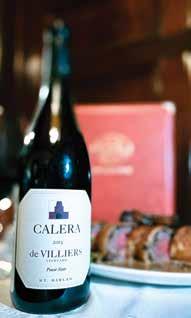
4. Restö at Thermëa Spa: Sous Chef Darnell suggests pairing Warm Potato and Smoked Char Bowl with Ka Tahi The One Sparkling Sauvignon Blanc (New Zealand).


7. Peasant Cookery: Grano a Grano is a bright, rich Cabernet Sauvignon from Central California. Its aromas of ripe summer berries, vanilla, and baking spice lend well to the Peasant Pie—braised bison and beef, mushrooms and carrots, topped with whipped potato and espresso BellaVitano cheddar.
 5. Junction 59 Roadhouse: Our bartender Alex loves the Roadhouse Steak Sandwich with our French Onion Soup paired with Chop Shop Cabernet Sauvignon (California) wine.
6. Lounge at the Fairmont: Our classic lounge is the perfect spot to linger over our Charcuterie Board and a bottle of Les Domaines Auriol Maison Vialade Pinot Noir (France).
8. 529 Wellington: The Beef Wellington with foie gras and mushroom Cabernet sauce pairs perfectly with Duckhorn Vineyards Calera de Villiers Pinot Noir (California).
5. Junction 59 Roadhouse: Our bartender Alex loves the Roadhouse Steak Sandwich with our French Onion Soup paired with Chop Shop Cabernet Sauvignon (California) wine.
6. Lounge at the Fairmont: Our classic lounge is the perfect spot to linger over our Charcuterie Board and a bottle of Les Domaines Auriol Maison Vialade Pinot Noir (France).
8. 529 Wellington: The Beef Wellington with foie gras and mushroom Cabernet sauce pairs perfectly with Duckhorn Vineyards Calera de Villiers Pinot Noir (California).

Do you feel you are too grown up for sweet wine?

Humans have a troubled relationship with sugar. Some of us embrace it by reading the dessert menu first. Others avoid it for dietary restrictions or general health. But any careful diabetic will tell you that avoiding sugar means being wary. Inside many energy drinks, ketchup, barbecue sauces, and flavoured coffees are often loads of sugar. It is simultaneously a guilty pleasure, a forbidden fruit, and a secret agent.
When it comes to wine, there are layers of history and social pressures on top of those considerations. Especially in North America, we have come to think that sweet in wine is bad. We believe that if we are sophisticated wine lovers, we should want dry wine. This new norm is a hangover from masses of poor-quality sweet table wines from the last decades of the 20th century. Those wines were justly condemned by experts and critics; over time, we learned to snub sweet wines.
During this shift, we also turned our backs on classic sweet wines of the world, which actually rank among the most beautiful wines imaginable. These are the result of timeconsuming, weather-dependent, skilled work that brings the natural sweetness of the fruit to the fore.
There are several ways to make a wine sweet. Concentrating grape sugars through the special combination of ripe fruit, misty mornings, sunny afternoons, and a fungus called botrytis (“noble rot”) creates classics such as French Sauternes, German Trockenbeerenauslese, and Hungarian Tokaji. Drying grapes after harvest also concentrates sugars, which is where Italians have excelled: Recioto and Vin Santo are two fine examples. Freezing grapes on the vine (separating sweet nectar from water) gives us Canadian Icewine. The Portuguese are masters of adding grape spirit to fermenting juice to stop fermentation, resulting in sweet, fortified classics.
But be wary: sweetness can also be added to a dry wine, a technique that is neither new nor noble. Many branded wines use it, often added as syrupy rectified concentrated grape must (RCGM). This adjustment softens rough edges and brings fruitiness forward. That process can make wines like Meiomi Pinot Noir weigh in with a whopping 28 grams per litre—almost 2 tablespoons of sugar in every bottle. For Apothic red, the finished wine is about 15 grams per litre. But if we are told a wine is dry, we tend to believe it. Tasting notes freely available about these wines mention “juicy strawberry flavour and notes of dark berries”; ”complexity and depth”; “silky layers . . . a soft, plush mouthfeel . . . a hint of intrigue.” Considering that such wines are objectively sweet, yet marketed as regular table wines, it is indeed a bit of intrigue.
Classic sweet wines, on the other hand, are not soft pillows but rather tight-rope walkers: focused, balanced, and utterly amazing. A dessert of Vin Santo with hazelnut biscotti is a lovely way to end a meal. There is also true poetry in pairing sweet wine with savoury dishes: a sweet German Riesling, balanced by racy acidity, can weave charm over a fiery Thai dish. Not long ago, I was lucky enough to attend a special banquet in Europe that showcased famous wines. Mid-way through the meal was a rich, salty dish served with a glass of 15-year-old Sauternes. It was heaven. The sweetness was no secret agent, but the star of the pairing.
Here’s to you, the classically sweet.



